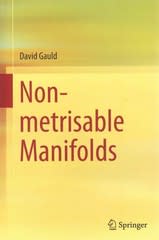Question
First, what you will need. You are going to need to find the results of some sort of public opinion poll online, and you are
First, what you will need. You are going to need to find the results of some sort of public opinion poll online, and you are going to need 5-10 people to your own smaller version of the poll. In order to walk you through this, I am going to use a "What is your favorite color?" poll from MatePoll (link: https://www.matepoll.com/poll.html?id=5e6104194500ef75aef5411d(Links to an external site.)Links to an external site.) and my siblings will be the 5 people I need to run a mini-poll.
For the first question, you need to describe the poll you are using, give the results, and explain how it could be converted to a binomial probability experiment. In my case, the answer would look something like this:
"The poll I am considering is surveying respondents' favorite colors, the available options are blue, pink, red, orange, yellow, green, and other. Exact counts on results were not provided, however, the probabilities of each choice were (see table).
Blue | Pink | Red | Orange | Yellow | Green | Other |
28.27% | 15.67% | 13.63% | 2.59% | 6.70% | 6.57% | 26.58% |
Since binomial probability experiments assume only 2 possible outcomes, I need to reduce the number of options in order to conduct my experiment. I will ask each of my siblings (5) what their favorite color is, then I will count those responses that have the same favorite as me (green) as a success, and all other responses as a failure."
The second question is about making your experiment and the poll match. In my case, the answer would look something like this:
"My experiment was to ask my siblings their favorite color and count it as a success if they answered green. I asked 5 people their favorite color and 1 answered green, in terms of a binomial distribution that means that n=5 and p=0.2. In the poll I found, 6.57% of 98133 people listed their favorite color as green, which corresponds to n=98133 and p=0.0657. The disagreement between my experiment and the poll makes me think that if I asked more people, I would get fewer people that preferred green than my current results suggest."
The final question is especially poorly worded. What I would like to see here is just two quick calculations of the expected value of your binomial distributions. Something like this:
"Taking the probability from my experiment, out of a sample of 100 people I would expect 20 to have green as their favorite color. Using the poll data though, I get a much lower result of only expecting 7 (6.57 but we don't want parts of a person) people to have green as their favorite color."
Step by Step Solution
There are 3 Steps involved in it
Step: 1

Get Instant Access to Expert-Tailored Solutions
See step-by-step solutions with expert insights and AI powered tools for academic success
Step: 2

Step: 3

Ace Your Homework with AI
Get the answers you need in no time with our AI-driven, step-by-step assistance
Get Started


